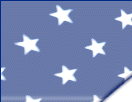 t'll be raining Rawlings on Lansdowne Street when the All-Star festival comes to Fenway Park next Sunday, Monday, and Tuesday. Bring your glove and your hardshell hat to the street behind the Green Monster and wait for a hail of baseballs to descend from the heavens.
t'll be raining Rawlings on Lansdowne Street when the All-Star festival comes to Fenway Park next Sunday, Monday, and Tuesday. Bring your glove and your hardshell hat to the street behind the Green Monster and wait for a hail of baseballs to descend from the heavens.
Tickets to the July 13 All-Star Game are just about impossible to get, and it won't be much easier to attend the increasingly popular home run derby, which is held the day before the game.
But industrious fans searching for souvenirs can hang out behind the Wall and wait for batting practice shots off the bats of Mark McGwire, Sammy Sosa, Albert Belle, Jose Canseco, and the rest of the righty sluggers who figure to be taking aim at the Mass Pike July 12 and 13.
No tickets? No problem. Take it to the street. Lansdowne Street. McGwire may kiss the sky, but you can still catch his moonshot when it falls back to earth.
Lansdowne will be closed to traffic, and a large police presence will preserve order as fans scuffle for home run shots. Forget about standing on the parking garage roof that's the site of so many hardball crash-landings. Major League Baseball has leased the garage and corporate reps from Budweiser and Pepsi will have Bud Selig-signature baseballs plopping into their martini glasses.
The celebrity home run contest is a week from today, but that'll be low yield. We're not expecting Matt Damon and celebrity suck-up Kevin Costner to pepper the railroad tracks beyond the garage.
Monday and Tuesday will be different. American League sluggers take batting practice Monday from 5:30 to 6:30 and the National League stars will invade the cage from 6:30-7:30. At 8 p.m., it'll be Home Run Derby in front of a packed house and a national television audience. This should be a souvenir windfall.
Game Day could be a different story. Fenway has not been a homer haven in previous All-Star competition.
Baseball's midsummer classic has twice come to Yawkey Way, but only four homers have been hit in 18 All-Star innings, none by the National League, and only one over the left-field wall, by Detroit's Rocky Colavito in 1961.
The mighty AL skunked the NL, 12-0, in 1946, thanks to two homers by Ted Williams and one by Charlie Keller. The '61 game ended in a 1-1 tie when rains soaked the field after nine innings.
It's hard to account for the National League's All-Star power outage at Fenway. The 1946 NL team featured only a couple of sluggers (Stan Musial and Johnny Mize), but the 1961 NL team had Hank Aaron, Eddie Mathews, Willie Mays, Ernie Banks, and Frank Robinson, which is 33 percent (five of 15) of baseball's prestigious 500-homer club. Of the fab five, only Mays managed a hit, and it was a single.
1961 was much like baseball's magical 1998. It was the year of the Home Run with New York's tandem of Roger Maris and Mickey Mantle leading the way. Maris would break Babe Ruth's record with 61 homers, and Mantle settled for 54. They went 0-4 in the All-Star Game at Fenway.
The only home run of the '61 game came in the bottom of the first inning when Colavito turned on a Bob Purkey changeup and drove it into the left-field screen. The National League scored its run on a two-out sixth-inning infield single by Bill White (Luis Aparicio stopped the ball before it got to the outfield, which forced Orlando Cepeda to hold at third).
In 1946, Keller hit a shot into the National League bullpen. Williams hit one into the center-field bleachers and one into the American League bullpen.
Williams's first home run was hit off Brooklyn righty Kirby Higbe, but it was Ted's second blast that made the '46 All-Star Game memorable.
In the bottom of the eighth inning, with the game hopelessly out of reach for the National League, manager Charley Grimm called for Pittsburgh righty Rip Sewell. Sewell's best-known pitch was the infamous ''eephus'' ball. Sewell confused National League batters with a high, slow parabola that dropped down through the strike zone as if it had fallen from an overhead blimp. Before the '46 Classic, Williams asked Sewell if he'd dare throw ''that damned crazy pitch'' in the All-Star Game, and Sewell promised to serve one to The Kid.
So when Ted strode to the plate with the American League leading, 9-0, and two runners aboard, the time seemed ripe for Sewell to have a little fun. On his first delivery, Sewell wound up mightily, then floated an eephus toward the plate, and Williams almost hurt himself with a wicked cut that resulted in a feeble pop, out of play. The next pitch was another moonball, outside for ball one. After sneaking a fastball past Williams to run the count to 1-2, Sewell tried another eephus pitch, and Williams literally stepped into the ball and smacked it into the right-field bullpen. Ted laughed all the way around the bases. According to Sewell, Williams was the only man who ever hit an eephus pitch for a home run.
Even though the American League scored a dozen runs at Fenway in '46, only two balls were hit off the Wall - a two-run double by Yankee Joe Gordon and a line drive single by St. Louis Browns pitcher Jack Kramer.
A lot of offense will be expected when the All-Stars come back to Fenway next week. When the American and National leagues convened in Denver in 1998, they combined for a record-tying 31 hits and a record-breaking 21 runs in a 13-8 AL victory.
See you on Lansdowne Street. BYOG.
Dan Shaughnessy is a Globe columnist.



